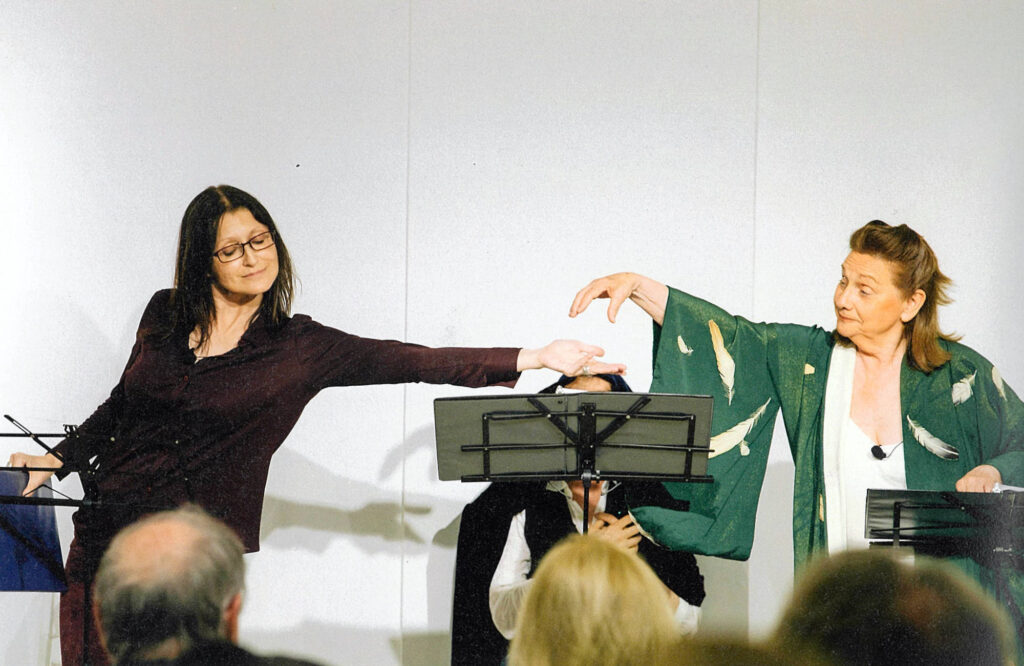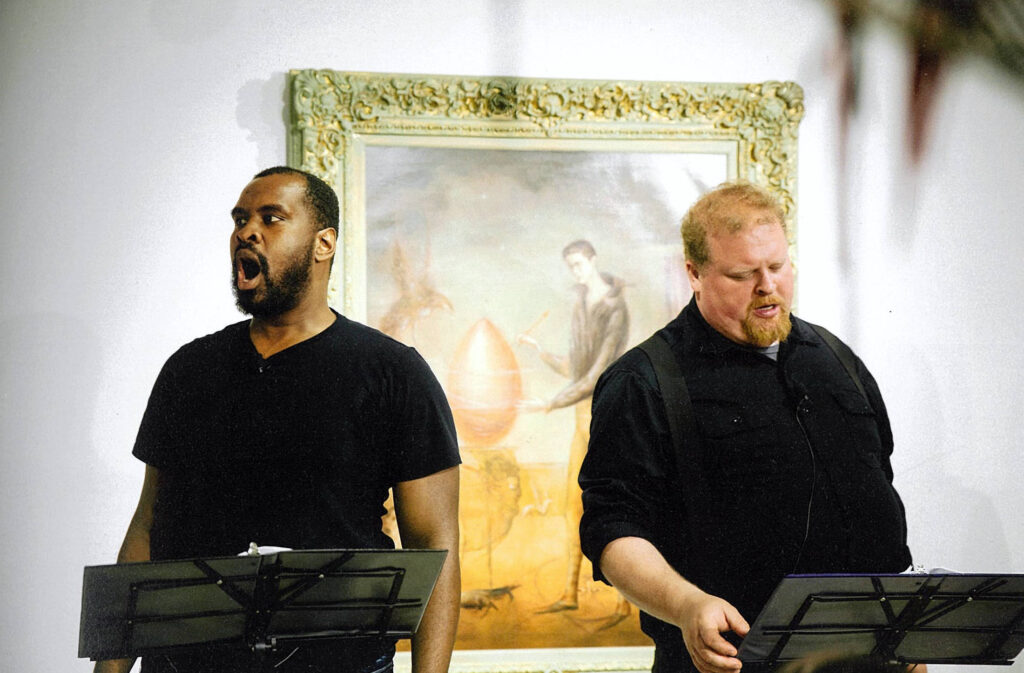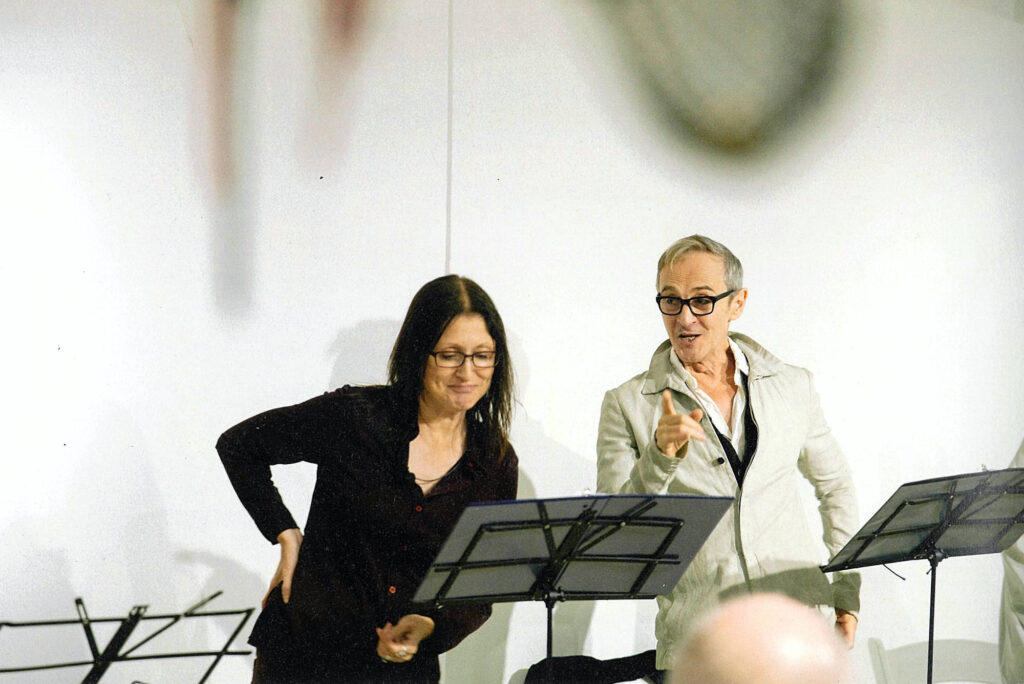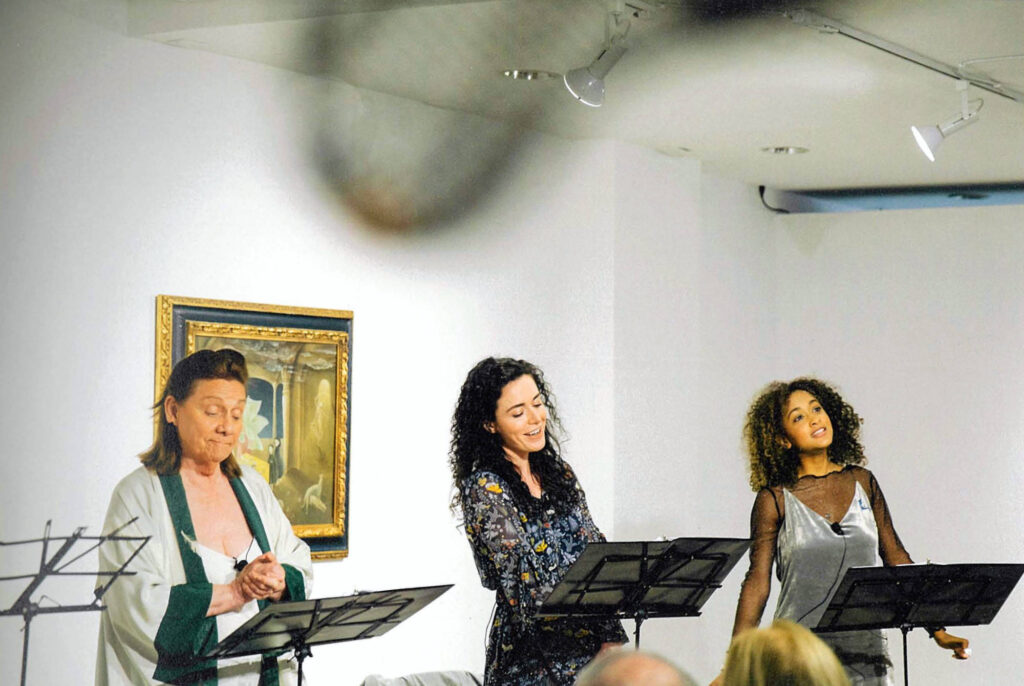Director’s Note
In Opus Siniestrus, Leonora Carrington doesn’t let anyone off the hook. Her language, images, and actions explode off the page and pelt you with the force of shrapnel. Her cast of characters evokes the blunt satire of Expressionism and the dream figures of Surrealism: Man, Woman, Doctor, Rat, Lepers, Bogey Man, Babe in the Wood, Mina Mina, 3 Astronauts, Publicity Jerk, Butcher, Astrologer Anonymous, 12 Cannibals, Tarzan, Superman, Hop-A-Long Cassidy, Hitler, Witch Doctor Boo Ha-Ha, Ostrich, Policeman, 4 Apocalyptic Beasts, and Computer. Many of these characters appear in Carrington’s haunting paintings: potent presences in a secret ritual. In Opus Siniestrus, Carrington employs song, nursery rhyme, and antic humor to reorient your senses. She makes time slow to an eternal now.
Like many great artists, and like prophets and oracles from times past, Carrington was tapped into her zeitgeist. In the apocalyptic visions of Opus Siniestrus, one finds analogues to horrific events that have actually occurred in the almost fifty years since Carrington wrote the play. But it is not a ritual of destruction. It is a rite of creation and purification. Joanne Pottlitzer, who collaborated with Carrington in the mid-70s to produce Opus Siniestrus, called her an “ordinary exorcist.” According to Pottlitzer, “Leonora believed that it is the woman’s role to exorcize the violence from man and the world in order to create more whole human beings (man and woman, often androgynous) and a better world.” Pottlitzer played for me tapes that composer and ethno-musicologist Verna Gillis had recorded as she was conceiving a musical score for the play. In these recordings, Gillis describes how Carrington wanted to hear Opus Siniestrus played like an opera/jazz/global music collage. It opens with a domestic spat one might hear through an airshaft in an urban metropolis, the ordinary violence of the home. Then a pistol shot and “the end, the end…” It concludes with one word: “Sleep.”
Perhaps the most stunning aspect of Carrington’s work is how it alchemically combines high, low, and popular cultures. Toward the end of Opus Siniestrus, twelve cannibals throw Hitler, Tarzan, Hop-A-Long Cassidy, and Superman into a cauldron and boil them to a stew. All iterations of the (toxic) male, he who takes up too much oxygen, are melted down to form a new way of being. A serpent appears at the play’s conclusion, but it is not the Christian serpent in the Garden of Eden. It is Coatlalopeuh, descended from Mesoamerican fertility and earth goddesses. The serpent has been driven underground, but it will rise again. In a leap of faith that is a leap into nature itself, the egg is fed to the serpent. With the proper balance of female and male power, Carrington tells us, life will thrive.
– Jean Randich
Director’s Note and photos published in
“The Story of the Last Egg”
on the occasion of the exhibition
Leonora Carrington: The Story of the Last Egg
Gallery Wendi Norris Offsite
926 Madison Avenue
New York, NY 10021
Publication @2019 Gallery Wendi Norris




